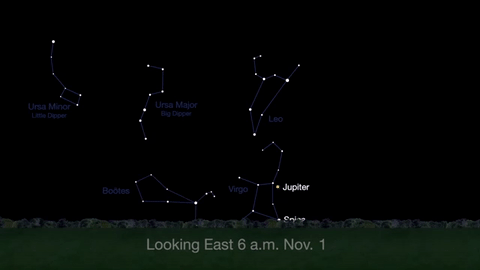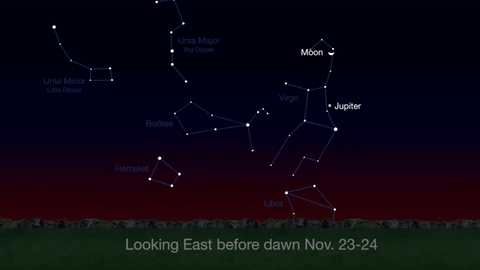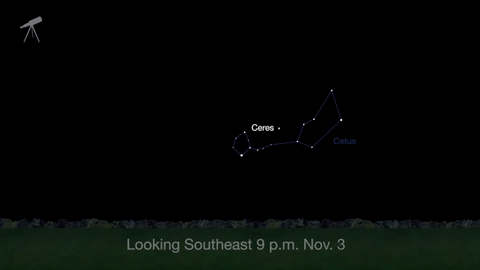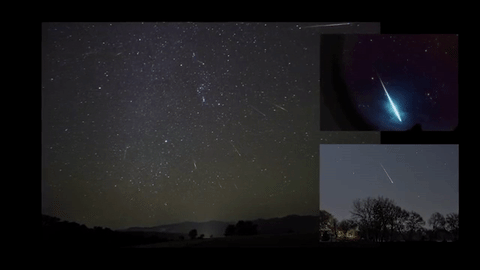I Love ROBOTBOY!!!!
I Love ROBOTBOY!!!!

@deathbot5000 @glamourcoffee How dare you take this honor from me. >A>
We’re gonna fight!

More Posts from Aliensteel23 and Others
An amazing view of the cosmos.
What’s Up for November 2016
What’s Up for November: Venus at sunset, Jupiter at dawn, your last evening glimpse of Saturn until spring, and more meteors!

Through November 3, catch glimpses of a gibbous Venus, a crescent moon and ringed Saturn in the southwest sky just after sunset.

Wake up before sunrise every day this month to see Jupiter just above Spica, the brightest star in the constellation Virgo, shining in the east-southeast sky.

Just before dawn on November 23-24, see the waning crescent moon just above Jupiter.

November is a great time to see the constellation Ceres as it glides past Cetus, the Whale and you will be able to see the dwarf planet move relative to the background stars, but you’ll need a telescope for this one.

This month, just like last month, there will be three meteor showers–the Northern Tuarids, the Leonids and the November Orionids.

Watch the full November “What’s Up" video for more:
Make sure to follow us on Tumblr for your regular dose of space: http://nasa.tumblr.com.
Amazing.
The Moon Just Photobombed NASA’s Solar Dynamics Observatory
On May 25, 2017, the moon photobombed one of our sun-watching satellites by passing directly between the satellite and the sun.

The Solar Dynamics Observatory, or SDO, orbits Earth and watches the sun nearly 24/7 — except when another body, like the moon, gets in the way. These lunar photobombs are called transits, the generic term for when any celestial body passes in front of another.
Transits are one way we detect distant worlds. When a planet in another star system passes in front of its host star, it blocks some of the star’s light so the star appears slightly dimmer. By monitoring changes in a star’s light over time, scientists can deduce the presence of a planet, and even determine what its atmosphere is like. This method has been used to discover thousands of planets, including the TRAPPIST-1 planets.

SDO sees lunar transits about twice a year, and this one lasted about an hour with the moon covering about 89 percent of the sun at the peak of its journey across the sun’s face.
When they’re seen from Earth, we call lunar transits by another name: eclipses.

Solar eclipses are just a special kind of transit where the moon blocks all or part of our view of the sun. Since SDO’s view of the sun was only partially blocked, it saw a partial eclipse. Later this year, on Aug. 21, a total eclipse will be observable from the ground: The moon will completely block the sun’s face in some parts of the US, creating a total solar eclipse on a 70-mile-wide stretch of land, called the path of totality, that runs from Oregon to South Carolina.
Throughout the rest of North America — and even in parts of South America, Africa, Europe and Asia — the moon will partially obscure the sun, creating a partial eclipse. SDO will also witness this partial eclipse.

Total solar eclipses are incredible, cosmic coincidences: The sun is about 400 times wider than the moon, but it also happens to be 400 times farther away, so the sun and moon appear to be the same size in our sky. This allows the moon to completely block the sun when they line up just right.

Within the path of totality, the moon completely obscures the sun’s bright face, revealing the comparatively faint corona — the sun’s pearly-white outer atmosphere.

It’s essential to observe eye safety during an eclipse. You must use proper eclipse glasses or an indirect viewing method when any part of the sun’s surface is exposed, whether during the partial phases of an eclipse, or just on a regular day. If you’re in the path of totality, you may look at the eclipse ONLY during the brief moments of totality.

A total solar eclipse is one of nature’s most awe-inspiring sights, so make your plans now for August 21! You’ll also be able to see the eclipse cross the country that day through the eyes of NASA – including views of the partial eclipse from SDO – on NASA TV and at nasa.gov.
Learn more about the August eclipse — including where, when, and how to safely see it — at eclipse2017.nasa.gov and follow along on Twitter @NASASun.
Love it! More like the original version

NGL, Reboot Upgrade looks sick with normal colors.
who’s still on tumblr?
reblog if you plan on remaining active.
just wanna see if the number’s still huge! ☆
The wonders of Mars
1,000 Days in Orbit: MAVEN’s Top 10 Discoveries at Mars
On June 17, our MAVEN (Mars Atmosphere and Volatile Evolution Mission) will celebrate 1,000 Earth days in orbit around the Red Planet.

Since its launch in November 2013 and its orbit insertion in September 2014, MAVEN has been exploring the upper atmosphere of Mars. MAVEN is bringing insight to how the sun stripped Mars of most of its atmosphere, turning a planet once possibly habitable to microbial life into a barren desert world.

Here’s a countdown of the top 10 discoveries from the mission so far:
10. Unprecedented Ultraviolet View of Mars

Revealing dynamic, previously invisible behavior, MAVEN was able to show the ultraviolet glow from the Martian atmosphere in unprecedented detail. Nightside images showed ultraviolet “nightglow” emission from nitric oxide. Nightglow is a common planetary phenomenon in which the sky faintly glows even in the complete absence of eternal light.
9. Key Features on the Loss of Atmosphere

Some particles from the solar wind are able to penetrate unexpectedly deep into the upper atmosphere, rather than being diverted around the planet by the Martian ionosphere. This penetration is allowed by chemical reactions in the ionosphere that turn the charged particles of the solar wind into neutral atoms that are then able to penetrate deeply.
8. Metal Ions

MAVEN made the first direct observations of a layer of metal ions in the Martian ionosphere, resulting from incoming interplanetary dust hitting the atmosphere. This layer is always present, but was enhanced dramatically by the close passage to Mars of Comet Siding Spring in October 2014.
7. Two New Types of Aurora

MAVEN has identified two new types of aurora, termed “diffuse” and “proton” aurora. Unlike how we think of most aurorae on Earth, these aurorae are unrelated to either a global or local magnetic field.
6. Cause of the Aurorae

These aurorae are caused by an influx of particles from the sun ejected by different types of solar storms. When particles from these storms hit the Martian atmosphere, they can also increase the rate of loss of gas to space, by a factor of ten or more.
5. Complex Interactions with Solar Wind

The interactions between the solar wind and the planet are unexpectedly complex. This results due to the lack of an intrinsic Martian magnetic field and the occurrence of small regions of magnetized crust that can affect the incoming solar wind on local and regional scales. The magnetosphere that results from the interactions varies on short timescales and is remarkably “lumpy” as a result.
4. Seasonal Hydrogen

After investigating the upper atmosphere of the Red Planet for a full Martian year, MAVEN determined that the escaping water does not always go gently into space. The spacecraft observed the full seasonal variation of hydrogen in the upper atmosphere, confirming that it varies by a factor of 10 throughout the year. The escape rate peaked when Mars was at its closest point to the sun and dropped off when the planet was farthest from the sun.
3. Gas Lost to Space

MAVEN has used measurements of the isotopes in the upper atmosphere (atoms of the same composition but having different mass) to determine how much gas has been lost through time. These measurements suggest that 2/3 or more of the gas has been lost to space.
2. Speed of Solar Wind Stripping Martian Atmosphere

MAVEN has measured the rate at which the sun and the solar wind are stripping gas from the top of the atmosphere to space today, along with details of the removal process. Extrapolation of the loss rates into the ancient past – when the solar ultraviolet light and the solar wind were more intense – indicates that large amounts of gas have been lost to space through time.
1. Martian Atmosphere Lost to Space

The Mars atmosphere has been stripped away by the sun and the solar wind over time, changing the climate from a warmer and wetter environment early in history to the cold, dry climate that we see today.
Maven will continue its observations and is now observing a second Martian year, looking at the ways that the seasonal cycles and the solar cycle affect the system.
For more information about MAVEN, visit: www.nasa.gov/maven
Make sure to follow us on Tumblr for your regular dose of space: http://nasa.tumblr.com
Awesome
Solar System: Things to Know This Week
Learn the latest on Cassini’s Grand Finale, Pluto, Hubble Space Telescope and the Red Planet.
1. Cassini’s Grand Finale

After more than 12 years at Saturn, our Cassini mission has entered the final year of its epic voyage to the giant planet and its family of moons. But the journey isn’t over. The upcoming months will be like a whole new mission, with lots of new science and a truly thrilling ride in the unexplored space near the rings. Later this year, the spacecraft will fly repeatedly just outside the rings, capturing the closest views ever. Then, it will actually orbit inside the gap between the rings and the planet’s cloud tops.
Get details on Cassini’s final mission
The von Kármán Lecture Series: 2016
2. Chandra X-Rays Pluto

As the New Horizon’s mission headed to Pluto, our Chandra X-Ray Observatory made the first detection of the planet in X-rays. Chandra’s observations offer new insight into the space environment surrounding the largest and best-known object in the solar system’s outermost regions.
See Pluto’s X-Ray
3. … And Then Pluto Painted the Town Red

When the cameras on our approaching New Horizons spacecraft first spotted the large reddish polar region on Pluto’s largest moon, Charon, mission scientists knew two things: they’d never seen anything like it before, and they couldn’t wait to get the story behind it. After analyzing the images and other data that New Horizons has sent back from its July 2015 flight through the Pluto system, scientists think they’ve solved the mystery. Charon’s polar coloring comes from Pluto itself—as methane gas that escapes from Pluto’s atmosphere and becomes trapped by the moon’s gravity and freezes to the cold, icy surface at Charon’s pole.
Get the details
4. Pretty as a Postcard

The famed red-rock deserts of the American Southwest and recent images of Mars bear a striking similarity. New color images returned by our Curiosity Mars rover reveal the layered geologic past of the Red Planet in stunning detail.
More images
5. Things Fall Apart

Our Hubble Space Telescope recently observed a comet breaking apart. In a series of images taken over a three-day span in January 2016, Hubble captured images of 25 building-size blocks made of a mixture of ice and dust drifting away from the comet. The resulting debris is now scattered along a 3,000-mile-long trail, larger than the width of the continental U.S.
Learn more
Discover the full list of 10 things to know about our solar system this week HERE.
Make sure to follow us on Tumblr for your regular dose of space: http://nasa.tumblr.com
Now I've seen everything
Solar System: Things to Know This Week
Making every night science movie night with these amazing videos.

1. Pure Beauty
Our star sprouting coronal loops courtesy of the NASA sun team. See the full video: https://go.nasa.gov/2p47Lt2

2. Where’s the last place you’d expect to find enough ice to bury a city?
Answer: Mercury, the closest planet to the sun. Watch the video: https://svs.gsfc.nasa.gov/11184

3. The Mars Fleet
Only Earth has more satellites studying it. Full video: https://svs.gsfc.nasa.gov/4414

4. A Star-Studded Cast
Check out NASA’s satellite fleet of Earth observers. See the video: https://svs.gsfc.nasa.gov/12586

5. Jupiter in Ultra HD
Thanks, Hubble Space Telescope! See the video: https://svs.gsfc.nasa.gov/12021

6. A Tear Jerker
Our Cassini spacecraft starts her 4.5-month Grand Finale this week. Full video: https://saturn.jpl.nasa.gov/resources/7628

7. Faster Than the Speed of Sound
Winds on Neptune travel faster than the speed of sound. Full video: https://svs.gsfc.nasa.gov/11349

8. A Musical Number
This one features the planet Uranus doing pop and lock. Full video: https://youtu.be/CWuWoiHmXUs

9. Up Close and Personal
Thanks to our New Horizons mission, we’ve been able to get up close and with Pluto. Full video: https://svs.gsfc.nasa.gov/12080

10: The Treasure Trove
TRAPPIST-1 is a treasure trove of seven Earth-sized planets orbiting a distant star. Full video: https://www.jpl.nasa.gov/video/details.php?id=1459
Discover more lists of 10 things to know about our solar system HERE.
Make sure to follow us on Tumblr for your regular dose of space: http://nasa.tumblr.com
Beautiful gems.
What would a Bloodstone and a Hackmanite make? A Bloodstone and a blue cat's eye? The Hackmanite and the cat's eye? Please and thank you very kindly 🙂
For Bloodstone and Hackmanite, I would recommend:

Chalcedony

Color Change Garnet

Diaspore
For Bloodstone and Blue Cat’s Eye:

Dioptase

Chrysocolla

Amazonite
And for Hackmanite and Blue Cat’s Eye, I’d recommend:

Cat’s Eye Alexandrite

Purple Fluorite

Black Opal
I hope that helps~
- Mod Sapphire ❤
You gotta love gem fusions.











Chalcedony !
Space 2017
Solar System: Things to Know This Week
See our home planet from Mars, learn about our latest Discovery missions, see stunning imagery from the Cassini mission and more!

1. Our Home
The powerful HiRISE camera on the Mars Reconnaissance Orbiter took this incredible image of our home and moon. The image combines two separate exposures taken on Nov. 20, 2016.
+ See more

2. Our Latest Missions of Discovery
We’ve selected two new missions to explore the early solar system. Lucy, a robotic spacecraft scheduled to launch in October 2021, is slated to arrive at its first destination, a main belt asteroid, in 2025. From 2027 to 2033, Lucy will explore six Jupiter Trojan asteroids. These asteroids are trapped by Jupiter’s gravity in two swarms that share the planet’s orbit, one leading and one trailing Jupiter in its 12-year circuit around the sun.
+Learn more
Psyche, targeted to launch in October 2023, will explore one of the most intriguing targets in the main asteroid belt–a giant metal asteroid, known as 16 Psyche. The asteroid is about 130 miles (210 kilometers) in diameter and thought to be comprised mostly of iron and nickel, similar to Earth’s core.
+ Details

3. Image From Cassini
Cassini took so many jaw-dropping photos last year, how could anyone choose just 10? Well, the Cassini team didn’t. Here are 17 amazing photos from Saturn and its moons last year.

4. The Colors of Mars
Impact craters have exposed the subsurface materials on the steep slopes of Mars. However, these slopes often experience rockfalls and debris avalanches that keep the surface clean of dust, revealing a variety of hues, like in this enhanced-color image from our Mars Reconnaissance Orbiter, representing different rock types.
+ Learn more

5. More From New Horizons
Even though our New Horizons mission flew by Pluto in 2015, the scientific discoveries keep coming. Using a model similar to what meteorologists use to forecast weather and a computer simulation of the physics of evaporating ices, scientists have found evidence of snow and ice features that, until now, had only been seen on Earth.
Discover the full list of 10 things to know about our solar system this week HERE.
Make sure to follow us on Tumblr for your regular dose of space: http://nasa.tumblr.com
-
 chocolatepizzagarden liked this · 3 years ago
chocolatepizzagarden liked this · 3 years ago -
 sarenkaxdd-blog liked this · 8 years ago
sarenkaxdd-blog liked this · 8 years ago -
 sonicmegaman7-blog liked this · 8 years ago
sonicmegaman7-blog liked this · 8 years ago -
 chewysgummies liked this · 8 years ago
chewysgummies liked this · 8 years ago -
 thesnappytrio liked this · 8 years ago
thesnappytrio liked this · 8 years ago -
 karikitdemon liked this · 8 years ago
karikitdemon liked this · 8 years ago -
 sleepingclockwork777 liked this · 8 years ago
sleepingclockwork777 liked this · 8 years ago -
 cinderacequeen reblogged this · 8 years ago
cinderacequeen reblogged this · 8 years ago -
 aliensteel23 reblogged this · 8 years ago
aliensteel23 reblogged this · 8 years ago -
 aliensteel23 liked this · 8 years ago
aliensteel23 liked this · 8 years ago -
 cinderacequeen liked this · 8 years ago
cinderacequeen liked this · 8 years ago -
 cinderacequeen reblogged this · 8 years ago
cinderacequeen reblogged this · 8 years ago